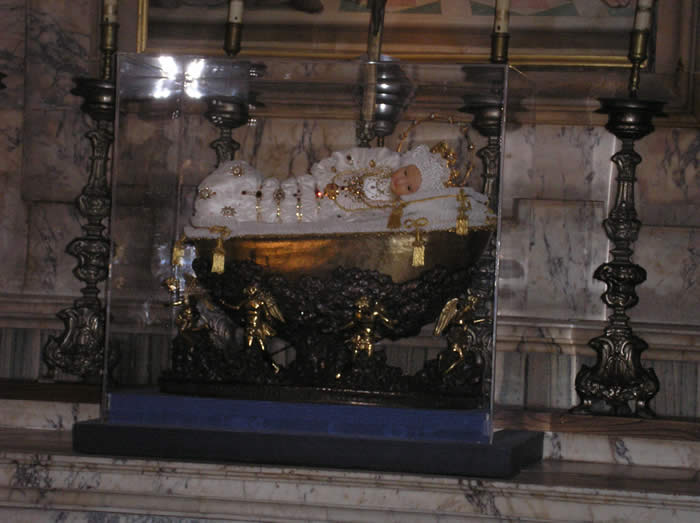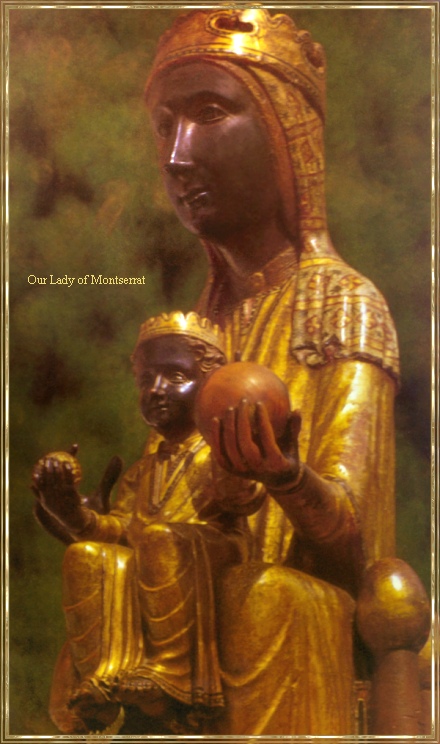Discourse o the Birth of Maryhttp://katolikongpinoy.org/why-do-we-celebrate-mama-marys-birthday.html
From Saint Alphonsus Liguori's The Glories of Mary:
Men usually celebrate the birth of their children with great feasts and rejoicings; but they should rather pity them, and show signs of mourning and grief on reflecting that they are born, not only deprived of grace and reason, but worse than this--they are infected with sin and are children of wrath, and therefore condemned to misery and death. It is indeed right, however, to celebrate with festivity and universal joy the birth of our infant Mary; for she first saw the light of this World a babe, it is true, in point of age, but great in merit and virtue. Mary was born a saint, and a great saint. But to form an idea of the greatness of her sanctity, even at this early period, we must consider, first, the greatness of the first grace with which God enriched her; and secondly, the greatness of her fidelity in immediately corresponding to it.
To begin with the first point, it is certain that Mary's soul was the most beautiful that God had ever created; nay more, after the work of the Incarnation of the Eternal Word, this was the greatest and most worthy of Himself than an omnipotent God ever did in the world. St. Peter Damian calls it "a work only surpassed by God." Hence it follows that divine grace did not come into Mary by drops as in other saints, but like rain on the fleece, as it was foretold by David. The soul of Mary was like fleece, and imbibed the whole shower of grace, without losing a drop. St. Basil of Seleucia says, "that the holy Virgin was full of grace, because she was elected and pre-elected by God, and the Holy Spirit was about to take full possession of her." Hence she said, by the lips of Ecclesiasticus, My abode is in the full assembly of saints; that is, as St. Bonaventure explains it, "I hold in plenitude all that other saints have held in part." And St. Vincent Ferrer, speaking particularly of the sanctity of Mary before her birth, says "that the Blessed Virgin was sanctified" (surpassed in sanctity) "in her mother's womb above all saints and angels."
 http://www.christorchaos.com/MariaBambina2006.htm
http://www.christorchaos.com/MariaBambina2006.htmPrayer to Infant Mary
Sweet Child Mary, destined to be the Mother of God and our sovereign and loving Mother, by the prodigies of grace you lavish upon us, mercifully listen to my humble supplications. In the needs which press upon me from every side and especially in my present tribulation, I place all my trust in you.
O Holy Child, by the privileges granted to you alone and by the merits which you have acquired, be merciful to me this day. Show that the source of spiritual favours and the continuous benefits which you dispense are inexhaustible, because your power with the Heart of God is unlimited. Deign through the immense profusion of graces with which the Most High has enriched you from the first moment of your Immaculate Conception, grant me, O Celestial Child, my petition, and I shall eternally praise the goodness of your Heart.






 Seal of the university
Seal of the university






















 The Cathedral Basilica of Florida,Uruguay, the National Sanctuary of the Virgin of the Thirty-Three .
The Cathedral Basilica of Florida,Uruguay, the National Sanctuary of the Virgin of the Thirty-Three .

![[Our
Lady of the Thirty Three]](http://campus.udayton.edu/mary/images/uru1.jpg)












